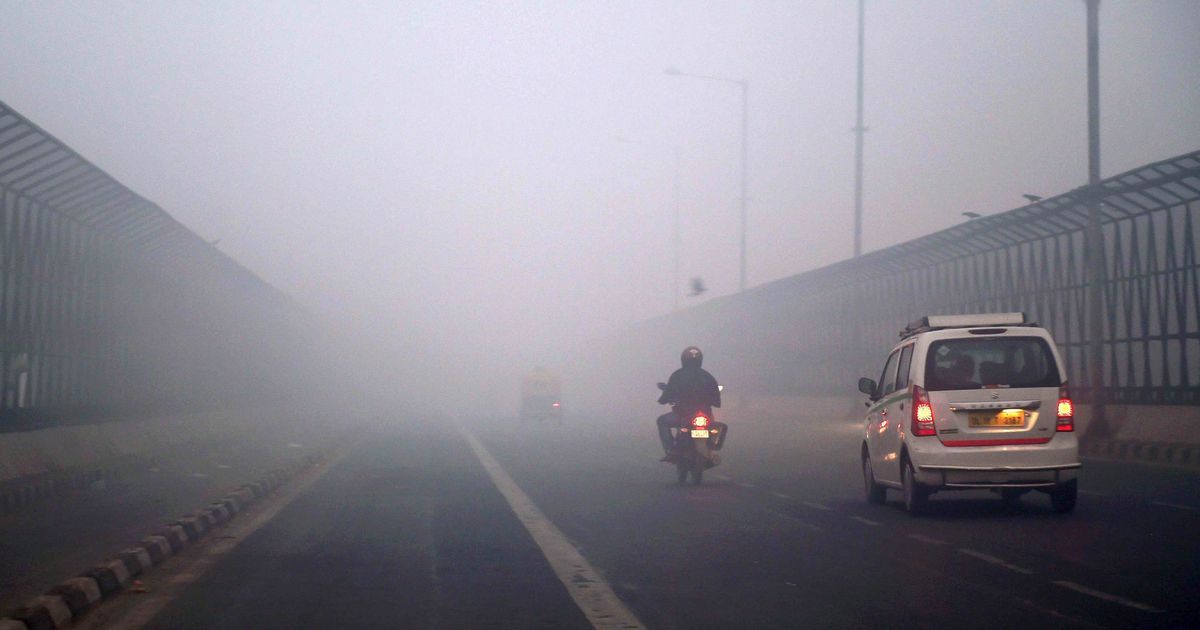
Union Environment Minister Anil Madhav Dave is in denial. While he cannot ignore the fact that air pollution in India is a serious problem, he does not want to be told this by people from outside the country.
In response to the State of Global Air 2017, a report produced jointly by the Boston-based Health Effects Institute and the Institute for Health Metrics and Evaluation in Seattle, which stated that India is not far behind China in the number of deaths attributable to air pollution, Dave complained that we Indians “seem to be far more influenced by things out of India.” Instead, he suggested, we should heed our own experts on this subject who he trusts “as much as I do our army.”
This strange comparison of science experts with the army notwithstanding, the minister’s defensive response to the report is perplexing. Even if some might quibble over the methodology used to arrive at a specific figure of the number of deaths attributable to the increase in air pollution, surely there is little to argue over the reality that air pollution is a serious environmental problem in India that is contributing to increased morbidity and mortality.
Something in the air
Relying on official statistics on air pollution levels and the comprehensive Global Burden of Disease report, the State of Global Air has calculated the health impacts of air pollution. The Global Disease Report is an impressive compilation of health data and analysis from 195 countries spanning 25 years, from 1990 to 2015, which is updated every year. It facilitates comparison of health data across populations, age groups and over a span of time.
This kind of information, combined with data about the levels of air pollution, particularly fine particulate matter termed PM 2.5, as well as ozone, provides the basis for calculations on the number of deaths that are attributable to the increase in air pollution levels as well as the number of disability-adjusted life years.
Long-term exposure to these pollutants, particularly PM 2.5, exacerbates cardiovascular conditions and respiratory problems and leads to a noticeable reduction in life span, particularly of the very young and the old. It is also now well-established that exposure to ozone leads to conditions like chronic obstructive pulmonary disease.
Given this, the State of Global Air report has concluded that of the 4.2 million deaths globally attributable to air pollution in 2015, India and China together account for 52% of them. However, while China has taken steps that have steadied the rate of increase of air pollution-related mortality, the graph in India continues to climb.
Not taken seriously
The reason for this is also not a mystery. Successive Indian governments have failed to take the problem seriously enough to implement tough measures to reduce the burden of pollutants in the air. Furthermore, by focusing only on big cities like Delhi, we have neglected the crisis facing many other smaller cities and towns.
In 2016, the World Health Organisation listed the 20 most polluted cities in the world. Of these, 10 were in India and the worst were Allahabad, Kanpur, Firozabad and Lucknow. A study by the Central Pollution Control Board (2015), one that Dave should not ignore as it is produced by “our own” scientists, rates Varanasi as one of the three most polluted cities.
The reason that a city like Delhi can generate more data on levels of pollution is because it has the infrastructure to measure them. While Varanasi has only three monitors to measure pollution levels, of which only one measures PM2.5 levels and none give you the air quality index, Delhi has 13 monitors that measure both PM10 and PM2.5 and provide daily air quality index.
If we are failing to even monitor the extent of air pollution in our towns and cities, how will we assess the impact on the health of their residents? Given the pathetic state of our infrastructure to assess air pollution, do we have any other option but to rely on studies like the State of Global Air report? Do we really need to wait, as the minister suggests, till Indian experts come up with their own studies that link air pollution to mortality and morbidity? In any case, if we ever get around to collecting credible ground data from cities, towns and villages across India, the reality will probably be much worse than what is revealed in this “foreign” report.
The other reality that we so easily forget is that the poor are most affected by the deterioration in air quality. The rich insulate themselves by buying expensive air purifiers for their homes and riding around in air-conditioned cars. The poor have no option but to breathe the foul air as they walk, or bicycle, or take public transport. Adding to this daily load of poisons that they breathe is the foul air in their poorly ventilated homes where the cooking fuel is most often firewood or cow dung.
By refusing to face up to the seriousness of the crisis, whatever be the source of information, the government is literally pushing millions of poor people, already vulnerable due to poor health and insufficient nutrition, closer to the edge.
This article first appeared in the Economic and Political Weekly.
Copyright © 2016 LIFAair. All right reserved. Site by Ventmere